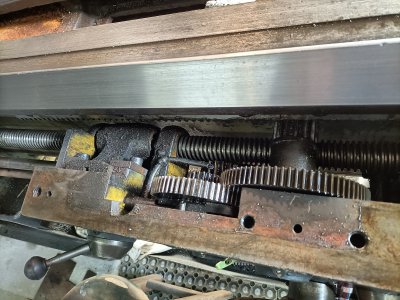A better search term for you to research is "backlash".
"Slop", "chatter", "poor finish" are the symptoms we are feeling/detecting while using the machine. Backlash in the leadscrew/nut pair, excessive wear in the ways (sliding contacts) of the machine and poor setups will combine to create these symptoms.
Here is a quick video.
@RafaelMarujo - I would make an earnest effort to level the lathe and try to remove any twist that may be present in your setup. There are some leveling procedures around here somewhere. I'll see if I can dig it up. Or you can do a search in the meantime. Once you have the machine level, then you can begin to narrow down where additional problems may exist in your machine.


